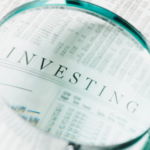In our article “Failure To Communicate”, we offered a synopsis of the extremely volatile market dynamics set in motion on May 22nd by Federal Reserve Chair, Ben Bernanke, when he alluded to potential “tapering” of Quantitative Easing. That volatility was in no way confined to U.S. markets – but touched virtually all markets to some degree.
As a reminder of the bond volatility set in motion by Bernanke, here is a copy of the data I previously provided regarding price movement in three large bond funds that I chose as “proxies” for the U.S. bond market as a whole: a) SPDR Barclay’s Aggregate Bond Index (LAG) (most closely representing the commonly used “bond market index” (which is included in its name); PIMCO Total Return Bond ETF (BOND), managed by the legendary “Bond King” (Bill Gross); and DoubleLine Core Fixed Income Fund (DBLFX), managed by Gross’ newest rival and fellow “guru”, Jeff Gundlach.
Performance Date Range LAG BOND DBLFX
1/1/13 through 4/29/13 +0.3% +2.0% +1.1%
4/29/13 through 5/31/13 -1.9% -2.5% -2.0%
5/31/13 through 6/21/13 -2.6% -2.6% -2.1%
The bottom line on this data is the following:
a) Under “normal” conditions, the bond market is not overly volatile; b) Comparing these funds, there are periods of outperformance by either Gross or Gundlach vis-à-vis the Index or each other; c) Comparing price activity during the first four months versus the most recent two months, we can clearly see that May and June has been (roughly) twice as volatile than those first four months. Overall, considering the “year to date” through June 21st, here is the performance data for these three funds:
-4.1% -3.11% -3.09%
Even though these “diversified” fixed income investments are not nearly as volatile as equities, obviously, no one invests in fixed income assets to receive the above returns! So if you want to “balance” your total investment portfolio with a solid fixed income alternative, what choices do you have?
I have already (during the past few weeks) presented you with information about several funds that provide higher than money-market yield without undue risk, funds that offer slightly higher returns but carry a bit higher “duration” (interest rate risk), and “floating rate” funds that carry a yield that is very attractive, with the “kicker” of diminished interest rate risk through the “floating rate” that adjusts each period (therefore lowering “duration”).
In this post, I want to present an intriguing (but in no way “perfect”) fund option for fixed income. This category of mutual fund or ETF is generically known as “Defined Maturity Bonds”, and (to oversimplify) it combines the diversification benefits of a fund with the “return of principal” feature of and individual bond. For those who don’t immediately grasp that description, allow me to briefly explain.
A “normal” bond fund contains a group of fixed income securities that are diversified across types (U.S. Treasury, corporate, investment grade, municipal, high yield, etc.), maturities, issue interest rate, etc. in accordance with the fund’s investment strategy and prospectus. During the course of the time you hold that fund, the NAV and yield of the fund will vary as market conditions dictate. Anyone concerned about “losing principal” in one of these funds will be at the mercy of the rise or fall of market interest rates (as well as any credit rating changes for corporates, municipals, etc.). One’s ultimate return within any such fund will depend on the fund manager’s skill in adjusting to ongoing market changes.
In contrast, a “Defined Maturity” bond fund is restricted to buying (and holding to maturity) bonds that mature in the year specified in its prospectus. As that “maturity year” approaches, interest rate risk is steadily reduced, until the specified “maturity date” arrives and the fund distributes the “face value” of all its holdings (less any defaults) in cash to shareholders. Yes, that is parallel to what happens if you hold an individual bond to maturity (you get the face value paid to you), with the additional benefit (in contrast to a single bond) of “diversification” – thereby reducing the “issuer risk” borne by anyone owning a single bond. (Example: those who held bonds in WorldComm, Enron, Lehman Brothers, etc. suffered huge losses because of the failure of those companies)
Speaking to the advantages of these funds, one investment professional has noted their growing popularity, writing: “… people are concerned about buying traditional bond funds that can lose their principal. They’re looking for alternatives.”[1] Defined Maturity Bonds offer such an “alternative”. In addition, one long-lived strategy for coping with interest rate risk in an environment of rising rates has been “laddering” (buying a series of bonds or CD’s of successive maturities, holding them to their respective maturities, and then “rolling up” each instrument upon maturity, thereby spreading your interest rate risk across many years and arriving at whatever “blended risk” you prefer). As one portfolio manager observes, the Defined Maturity Bond funds are ideally suited for “laddering”: “These are going to keep becoming increasingly popular as an alternative to creating bond ladders, particularly for investors with smaller portfolios. We’re finding that target-maturity funds appeal to buy and hold investors who want steady income streams without the threat of losing their original principals.”[2]
There are two primary providers of these funds: Guggenheim and BlackRock (iShares).
There are two primary providers of these funds: Guggenheim and BlackRock (iShares).
Above, we see a price graph for Guggenheim BulletShares 2016 Corp Bond (BSCG), that obviously matures within three years (making it most comparable to a “short term bond fund, the “proxy” for which I use “Vanguard ST Bond” (BSV), in green). The short red line represents the very new iShares 2016 Investment Grade Corporate (IBCB).
You can see that BSCG has outperformed BSV, while IBCB has tracked BSCG during its young life. Other key data points you’ll want to know include:
a) Stated yield (as of March): 2.17% for BSCG; 1.51% for BSV; IBCB is too new for a meaningful “yield”.
b) Average volume: BSCG 78,488; IBCB 4,240; BSV 1,008,790. This means that BSV will offer the smallest spreads, but BSCG will still offer much tighter spreads than IBCB.
The graph above moves four years beyond the above funds – to 2020, a bit longer than an intermediate-term bond, but shorter than a ten-year bond. (Without an ideal “proxy”, I use iShares Investment Grade Corp Bond (LQD)(red) with an effective duration of 7.49 years). In the “Defined Maturity” category, we have Guggenheim BulletShares 2020 Corporate Bond (BSCK) (blue) and iShares 2020 Corporate Bond (IBCD) (green).
Here we have a very similar pattern to the one for 2016, except the falloff in price during May and June is steeper. It is vital that you notice that the “Defined Maturity” nature of the ETFs we are reviewing does not keep them immune for price dips due to interest rate swings! The advantage with these funds is rooted in the buyer’s intention to hold the fund to maturity – thereby ensuring the ultimate restoration of losses resulting those rate swings!
Here is additional key data:
a) Stated yield: 2.59% for BSCK; 3.83% for LQD; IBCD, to new for stated yield.
b) Average volume: 31,003 for BSCK; 2.6 million for LQD; 6,917 for LBCD.
Once again, the “advantage” between the “Dated Maturity” funds goes to BSCK!
Finally, Guggenheim also offers “Defined Maturity Bond” choices in two additional asset classes: Municipal Bonds (for those in higher tax brackets) and High Yield (for the more venturesome). To peak your interest, here is a chart of the Guggenheim BulletShares 2016 High Yield Corporate Bond ETF (BSJG)(blue):
Note that the red line is that of BSCG (as detailed earlier) to provide you with a “benchmark” in the identical maturity year. You’ll quickly see that the downward slop of price in May and June was (not surprisingly) higher for BSCG!! However, if held to maturity, that “risk” will have been reversed by the time you receive your final distribution. Over vital data points for BSJG include: 5.16% 30-day SEC Yield; average volume of 58,188.
Action Plan: We have just witnessed the devastating impact of “interest rate risk” (and “Fed Risk”) in the markets. In this environment, I heartily agree with Andy Martin: “These ETFs hit the sweet spot of a market fixated on every Fed move and the threat of higher rates.” [3]
Consider whether any of these specialty bond funds could fit within your overall financial plan and portfolio. I personally am on the verge of replacing some of my current “high yield” exposure with one or more of the Guggenheim High Yield ETFs. I place a high value on the “known upfront” interest rate risk; but I must be very certain that I can and will hold the ETF to maturity! Otherwise, the fund’s primary (and unique) benefit is largely compromised!
There are a variety of “target dates” available. For specifics, visit:
http://guggenheiminvestments.com/products/etf/performance-yields; and/or
http://us.ishares.com/product_info/fund/index.htm.
DISCLOSURE: This article is intended to be educational in nature. Nothing in this article is intended to serve as a recommendation to buy or sell any fund. Each investor is unique and should consult with a financial professional prior to selling or buying any fund. The author owns BSV and BIV currently. He does not get compensated for any sale of any of these funds. All charts were created by the author through YahooFinance!
Submitted by Thomas Petty MBA CFP
Related Posts
Also on Market Tamer…
Follow Us on Facebook

 2 Quantum Computing Stocks That Could Supercharge Your Portfolio
2 Quantum Computing Stocks That Could Supercharge Your Portfolio



